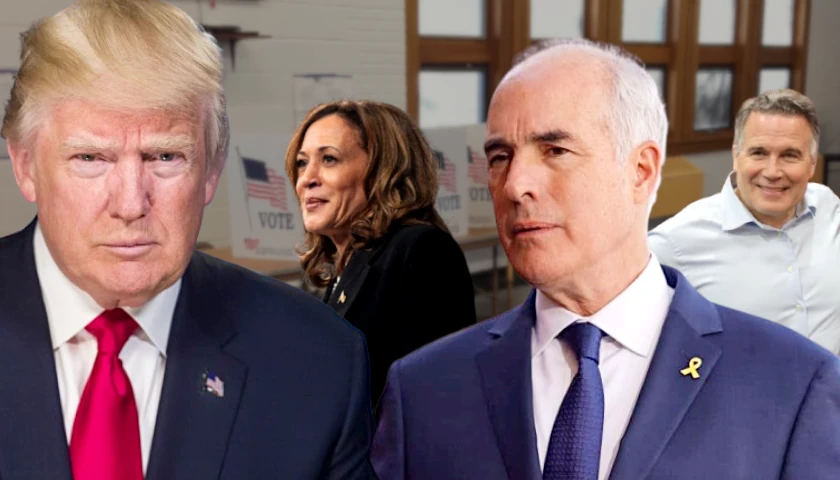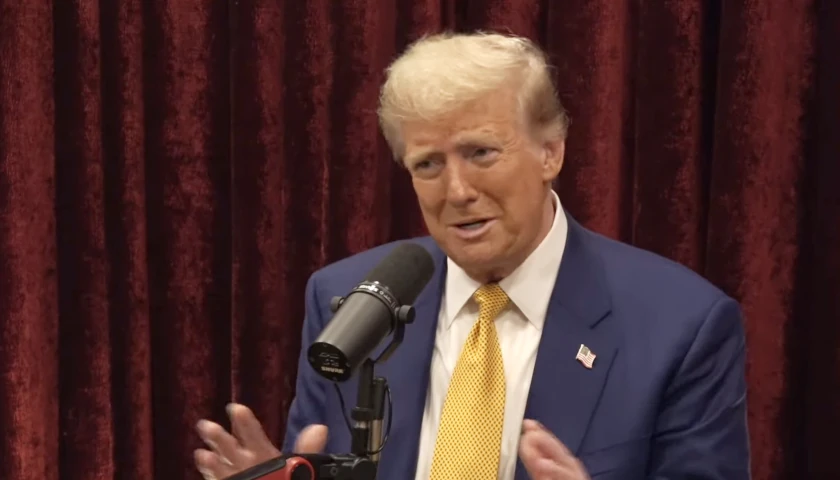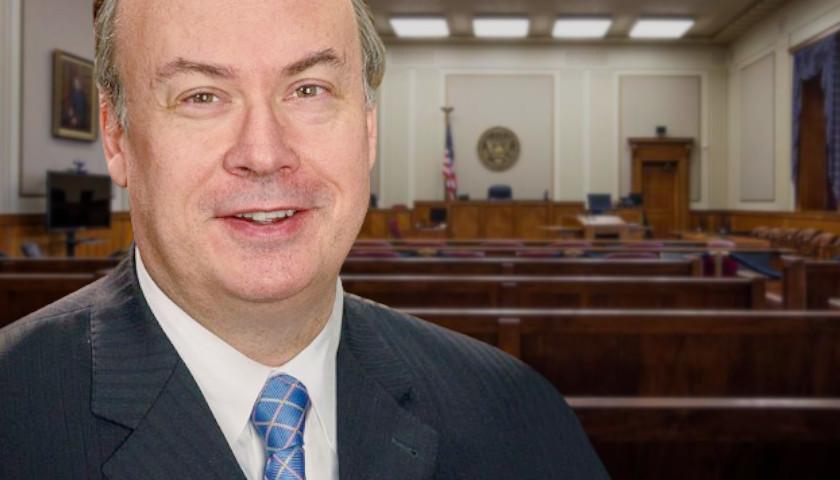by Paul Kengor
Black Lives Matter founder Patrisse Cullors has been in the news a lot lately because of controversy over her income and financial dealings, including recent purchases of several new homes. Cullors lashed out at these criticisms by protesting, “The fact that the right-wing media is trying to create hysteria around my spending is, frankly, racist and sexist.”
The fact is that Cullors’ own organization has demanded answers. Hawk Newsome, head of Black Lives Matter Greater New York City, called for “an independent investigation” of Cullors. “If you go around calling yourself a socialist, you have to ask how much of her own personal money is going to charitable causes,” says Newsome. “It’s really sad because it makes people doubt the validity of the movement and overlook the fact that it’s the people that carry this movement.… We need black firms and black accountants to go in there and find out where the money is going.”
But another particularly striking Cullors revelation of late has gotten almost no publicity. It was flagged for me by Mike Gonzalez, author of an upcoming major new book on BLM. It’s a video by Cullors titled, “What Is Abolition And Am I An Abolitionist?” Posted on her personal YouTube channel, it needs to be widely watched.
In that video, Cullors repeatedly calls herself an “abolitionist.” She talks about her “abolitionist journey” and the “abolitionist future we deserve.” She announces that she’s writing a book titled An Abolitionist Handbook.
Cullors applies her abolitionist goals to police — and not just police but even prisons and jails. She states flatly, “Abolition is the getting rid of police, prisons and jails, surveillance, and courts.”
Yes, the abolition of police, prisons, jails, surveillance, and courts — all part of what Cullors calls the “prison industrial complex.” As many of us have noted, she emphasizes that BLM’s “defund” movement is about literal abolition. That is, not just defunding the police, but abolishing the police. Plus prisons and jails, and now surveillance and courts, too.
In the video, Cullors points to (as she often does) her mentor Angela Davis, whom she hails as a fellow abolitionist, including of prisons. Davis, of course, is America’s best-known female Marxist. In Moscow in 1979, the Soviets (in a hall of entirely white folks) awarded her their prestigious Lenin Prize. Cullors’ memoir opens with a foreword by Davis.
It’s important to pause here to understand something crucial that helps make sense of where Cullors is coming from on this “abolition” theme.
Cullors, of course, is a proud Marxist (see my American Spectator piece “The Politics of Patrisse Cullors”). She describes her “ideological frame” as that of a “trained Marxist organizer” who is “super-versed on ideological theories.” In interviews and in her memoirs, she speaks of her intensive study reading Marx, Lenin, Mao, and other leading Marxists. “We spent the year reading, anything from Marx, to Lenin, to Mao, learning all types of global critical theory,” she said in an April 2018 interview.
Those of us who have repeatedly underscored these significant facts have done so for good reason, namely that when Cullors tells us this about herself, she’s telling us something very instructive. This is her philosophy and her worldview. And utterly essential to the Marxist philosophy and worldview is the notion of abolition.
Karl Marx (and Marxism) was all about abolition. The word is omnipresent throughout his writings. As noted by Marx biographer Robert Payne, the word “abolition” seems to practically jump off every page of the Communist Manifesto. “And after he has ‘abolished’ property, family, and nations, and all existing societies, Marx shows little interest in creating a new society on the ruins of the old,” observed Payne. “The Communist Manifesto was the gauntlet he threw at the world.”
It was indeed. Go online to various writings of Marx and do a search on words like “abolish” and “abolition,” as well as “criticize” and “criticism.” You’ll be struck immediately.
The goal of the Marxist project was one of fundamental transformation, of pursuing permanent revolution and unrestrained criticism of everything — nothing less than what Karl Marx called “the ruthless criticism of all that exists.” Marx in his essay declaring religion “the opium of the people” said that “the criticism of religion is the beginning of all criticism.” In that infamous essay, he used the word “criticism” 29 times.
Marx’s ideas were utterly radical, or (as Marx openly conceded) “contrary to the nature of things.” Above all, Marx in the Manifesto acknowledged that communism seeks to “abolish the present state of things.”
Think about that one: “abolish the present state of things.” Read it again. Say it out loud. What could be more radical, more revolutionary?
For those think that Marxism was about mere markets and wealth, chew that one over.
Marx in the Manifesto stated that communists “openly declare that their ends can be attained only by the forcible overthrow of all existing social conditions.” Note these words: “forcible overthrow of all existing social conditions.” “All” meant “all.” He and Friedrich Engels closed the Manifesto with this: “Communists everywhere support every revolutionary movement against the existing social and political order of things.”
Quite chillingly, Marx, who wrote about the devil, had a favorite quote from the Mephistopheles (i.e., devil/demon) character in Goethe’s Faust, “Everything that exists deserves to perish.”
Again, chew that over: “Everything that exists deserves to perish.”
That is reckless and irresponsible — as reckless and irresponsible as calling for the abolition of police, prisons, jails, surveillance, and courts.
Above all, Karl Marx, like Patrisse Cullors, was an abolitionist.
Marx and Engels in the Manifesto targeted everything from property to the family to faith. “Abolition of the family!” they wrote with an exclamation. “Even the most radical flare up at this infamous proposal of the communists.” They noted that “Communism abolishes eternal truths, it abolishes all religion, and all morality.”
God has long been a special target for these revolutionaries. To quote Marx’s socialist buddy Mikhail Bakunin from his signature book God and the State: “If God really existed, it would be necessary to abolish him.”
Yes, you read that right: “If God really existed, it would be necessary to abolish him.”
Marx envisioned an apocalyptic revolution leading to the abolition of capitalism, classes, and the state itself. In the process, even democracy (temporary exploited) would be abolished.
Reading all of this closely, of course, was Vladimir Lenin, the totalitarian despot and mass killer that Patrisse Cullors read closely. In his most revealing work, The State and Revolution, Lenin, in his chapter “The Transition from Capitalism to Communism,” quoted Marx and Engels: “the bourgeois state does not ‘wither away,’ but is ‘abolished’ by the proletariat in the course of the revolution.”
That wasn’t the only thing that Lenin and the Bolsheviks sought to abolish. Consider Lenin’s landmark October 2, 1920, speech to the Russian Young Communist League, in which Lenin instructed the 600 assembled delegates in how to “accomplish the task of destroying the foundations of the old.” Lenin said of Marx: “He critically reshaped everything that had been created by human society, without ignoring a single detail. He reconsidered, subjected to criticism, and verified on the working-class movement everything that human thinking had created.” Everything, everything. Among them, the “old schools” would need to be abolished. “The old schools produced servants needed by the capitalists,” sniffed Lenin. “We must therefore abolish them.”
The new “aim,” Lenin told young communists, was simple: “learn communism.” He told the youth, “You have to build up a communist society,” and “every young man and woman” must proceed in that task without exception. “You must train yourselves to be communists.” As for “the old society,” said Lenin, “We had to destroy all that, and overthrow them.” This meant “overthrowing the tsar, overthrowing the capitalists, and abolishing the capitalist class.”
Abolish, abolish, abolish. Lenin, too, was an abolitionist. Communism required a constant process of abolition.
In short, the notion of abolition dominates Marxist thoughts and writings. Marxists are abolitionists. And, not surprisingly, so is Patrisse Cullors, as she tells us in this new video and upcoming book.
So, when you hear Patrisse Cullors, founder of BLM, talking about “abolishing the police” — and, more so, “getting rid of” prisons and jails and surveillance and courts—and when you hear her calling herself a trained and studied and committed Marxist, you need to understand that the Marxism is not unrelated. For those liberals who shrug off the fact that Cullors is a Marxist, well, you have a lot to learn.
And above all, most disturbing is what this says about the destructive roots of the “abolish the police” movement that Patrisse Cullors and BLM have inspired. The Marxism matters.
– – –
Paul Kengor is professor of political science at Grove City College in Grove City, Pa., and senior academic fellow at the Center for Vision & Values. Dr. Kengor is author of over a dozen books, including A Pope and a President: John Paul II, Ronald Reagan, and the Extraordinary Untold Story of the 20th Century, The Politically Incorrect Guide to Communism, and Dupes: How America’s Adversaries Have Manipulated Progressives for a Century.
Photo “Patrisse Cullors” by Patrisse Cullors.









